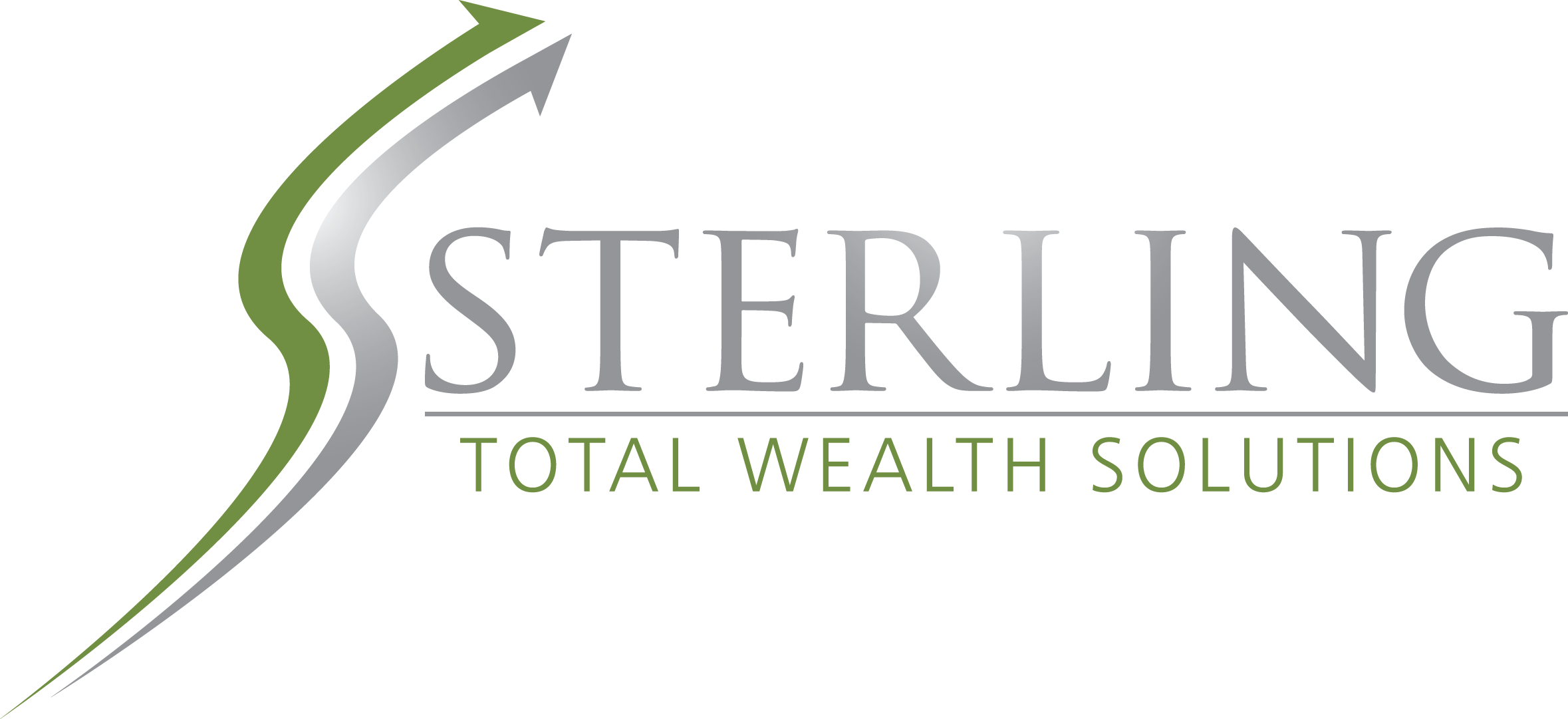In this Q3 recap: stocks climb, U.S. economic indicators shine, yearly inflation decreases slightly, and a trade war gets underway.
Quarterly Economic Update
Q3 2018 | Presented by Sterling Wealth Advisors
THE QUARTER IN BRIEF
The third quarter of 2018 shall be remembered as a great one for stocks. The Dow Industrials, Nasdaq Composite, and S&P 500 all rose more than 7% in three months as bullish investors maintained their confidence in the face of some momentous news developments. Consistently strong economic indicators and impressive corporate profits helped motivate the summer rally. While the prospect of a global trade war did not ruffle Wall Street, investors in other regions shouldered more worry about the imposition of tariffs. Meanwhile, the Federal Reserve continued raising interest rates, the housing market cooled, and wage growth improved.1
DOMESTIC ECONOMIC HEALTH
The trade war with China that began in the second quarter intensified in the third, even while both nations attempted to resume negotiations. On July 6, China and the U.S. each imposed import taxes on $34 billion worth of each other’s products. August 23 saw both parties expand the tariffs to cover $50 billion in goods. On September 24, the U.S. placed a 10% tariff on $200 billion more of Chinese imports, slated to rise to 25% in 2019. China retaliated with further tariffs on its end, assessing levies on $60 billion more of American-made products reaching its borders.2
Apart from a trade war, there was also a crucial trade deal at the end of the quarter. On September 30, the U.S., Canada, and Mexico agreed to a trilateral update for the North American Free Trade Agreement (NAFTA). The tentative accord must now be approved by the respective governments of all three nations. It stipulates that cars in the NAFTA region must be built with 75% or more of their parts manufactured in the three nations, or face tariffs; additionally, 40-45% of cars being built in the region will have to be made by workers paid at least $16 an hour. The agreement would also institute new trade secret and intellectual property standards and environmental regulations intended to thwart unlawful animal, fish, and timber importation and permit easier access to Canada’s dairy market.3
Federal Reserve officials decided on another quarter-point interest rate hike. The September 26 decision took the federal funds rate to a target range of 2.00-2.25%. Notably, the latest Federal Open Market Committee statement removed the word “accommodative,” symbolically shutting the door on the easy money era. In the press conference after that news release, though, Fed chairman Jerome Powell referred to the new funds rate level as “accommodative.” This was the central bank’s third rate move of 2018, and one more is widely expected in December. The FOMC now projects 3.1% growth for the economy in 2019, as opposed to the prior forecast of 2.8%.4
Consumers were keenly optimistic this summer. The Conference Board’s monthly consumer confidence index shows excellent readings of 127.9, 134.7, and 138.4 for July, August, and September, respectively. Those numbers include revisions to the July and August readings. In September, the University of Michigan’s consumer sentiment index settled at 100.1, only the third time in the last 14 years it has topped 100.5,6
The Institute for Supply Management’s factory sector and service sector purchasing manager indices signaled that businesses were in good shape as well. ISM’s service sector index went from 55.7 in July to 58.5 for August, and its manufacturing PMI went from 58.1 in July to 61.3 a month later.7
The July and August employment reports from the Department of Labor were fair to good. July saw employers add a mediocre 147,000 net new jobs, but that improved to 201,000 the next month. More importantly, the annual rise in worker wages improved to 2.9% in August from 2.7% in July, approaching the level economists have long wanted to see in this recovery. In both months, the headline unemployment rate was just 3.9%; the underemployment (U-6) rate ticked down to 7.4% in August from 7.5%.8
Annualized inflation lessened in Q3. The Consumer Price Index displayed a yearly increase of 2.9% in July, then 2.7% in August; yearly core consumer inflation went from 2.4% to 2.2%. The Producer Price Index actually retreated 0.1% in August after a flat July; that retreat took its yearly advance down to 2.8% from the previous 3.3%.9
Other key indicators largely offered good news. By the end of the third quarter, the Bureau of Economic Analysis had delivered its third estimate of Q2 GDP: 4.2%. Hard goods orders were up 4.5% in August, following a 1.2% dip in July. Retail sales jumped 0.7% in July, but just 0.1% in August. Industrial output was up 0.4% in both those months; manufacturing output rose 0.3% in July and 0.2% a month later. Last but certainly not least, personal income rose 0.3% in both July and August.9
GLOBAL ECONOMIC HEALTH
Apart from the NAFTA update and the U.S.-China tariff battle, there was plenty of other news drawing the attention of investors here and abroad.
As the quarter ended, just six months remained until the Brexit, and the question was whether the United Kingdom’s separation from the European Union would be hard or soft. A hard Brexit would leave a free trade agreement in place, much like Canada has with the E.U., whereby the U.K. could recast its trade and immigration policies and create its own commerce regulations. Prime Minister Teresa May is against this Brexit route; some estimates forecast it could deliver a long-term economic blow of 5% of GDP. May has pushed for her “Chequers” proposal, which would allow seamless trade between the U.K. and E.U. while allowing freedom of movement to and from the E.U. for the U.K. population and autonomy over its services. E.U. leaders and the U.K.’s Labour party, however, oppose this “soft” Brexit concept. Italy put a scare into E.U. leadership when its populist coalition government moved to run a 2.4% annual deficit through 2021, a risky move given that its debt equals 130% of its GDP. Italian leaders aimed to lower taxes, provide a basic income, and lower the qualification age for retirement pensions.10,11
Were tariffs already impacting China’s economy? Perhaps. The nation’s official factory PMI slipped to 50.8 in September, a 7-month low; the private Caixin/Markit manufacturing PMI hit 50.0, showing a sector on the verge of contraction. Export orders contracted for the fourth month in a row. While India’s economy was growing 8.2% through the first half of 2018, its rupee had lost about 13% against the dollar by the time Q3 ended, a painful consequence given the upturn in crude oil prices; similar currency slides affected Argentina and Turkey.12,13
WORLD MARKETS
The Nikkei 225 was the one major foreign index that performed as well as its American counterparts during the quarter. It rose 8.14%. The MSCI World Index also had a fine Q3, improving 4.53%. France’s CAC 40 also went into the plus column with a gain of 3.31%; India’s Sensex advanced 2.27%, and the Australian All Ordinaries added 0.57%.14,15
On the other hand, Hong Kong’s Hang Seng slumped 4.03% for the quarter. MSCI’s Emerging Markets index fell 2.02%, and the United Kingdom’s FTSE 100 lost 1.66%. Canada’s premier benchmark, the TSX Composite, settled 1.26% lower for the quarter, and the Shanghai Composite declined 0.92%. The German DAX index retreated just 0.48%.14,15
COMMODITIES MARKETS
Palladium and oats finished first and second in commodity performance across the past three months, logging respective gains of 15.73% and 11.47%. RBOB gasoline advanced 6.97%; WTI crude, 5.38%; wheat, 1.90%; natural gas, 1.38%; the U.S. Dollar Index 0.09%. WTI crude settled at $73.56 on the NYMEX at the end of the quarter.16,17
There is also a long list of losers from Q3. Corn retreated 2.66%; platinum, 4.27%; soybeans, 4.30%; gold, 5.19%; copper, 6.30%; cotton, 8.59%; silver, 8.95%; sugar, 13.31%; coffee, 14.05%; cocoa, 16.89%. Lumber was the worst performer during the three months ending in September, dropping 31.91%. Gold closed the quarter at $1,196.20 on the COMEX, silver at $14.69.16,17
REAL ESTATE
Existing home sales make up the vast majority of residential real estate transactions, and according to the National Association of Realtors, they declined 0.7% in July and went flat in August. NAR’s pending home sales index did bode well for the near future, as it showed housing contract activity down 0.8% for July, then 1.8% for August. One signal that seller expectations seemed to be moderating: the sudden difference in annual price appreciation for the 20-city S&P CoreLogic Case-Shiller home price index. The July edition (the latest available) showed prices rising 5.9% year-over-year, down from 6.4% in June.9
The Census Bureau did find the pace of new home sales 3.5% improved in August after a 1.6% decline for July. It also measured a 9.2% jump for housing starts in August, in contrast to a 0.3% dip a month earlier. (Building permits increased by 1.5% in July, but then slipped 5.7% in August.)9
On June 28, Freddie Mac’s Primary Mortgage Market Survey calculated a 4.55% average interest rate on a 30-year home loan. The mean rate on the 30-year FRM in the September 27 edition of the PMMS: 4.72%. Average interest rates for 15-year FRMs and 5/1-year ARMs were respectively 4.04% and 3.87% back on June 28; they stood at 4.16% and 3.97% on September 27.18
TIP OF THE QUARTER

Why would a single parent consider buying a permanent life insurance policy? One, to ease the financial strain on your household from the loss of your income if you pass away. Two, the amount of life insurance coverage provided by your employer is likely not enough. Three, it offers you a way to build an estate.
LOOKING BACK, LOOKING FORWARD
The third quarter definitely flipped the usual Wall Street yearly script, in which bulls take the summer off between spring and fall rallies. No such behavior in 2018: the three major indices rose as much in the third quarter as some analysts felt they would all year. As the table below shows, the Dow Jones Industrial Average led the way in Q3 rather than the Nasdaq Composite. The small-cap Russell 2000 advanced 3.26% in Q3, and the accepted volatility index for Wall Street, the CBOE VIX, slipped 24.67%. The Dow ended the quarter at 26,458.31; the S&P 500, at 2,913.98; the Nasdaq, at 8,046.35.1,19
In Q3, the current bull market became the longest in the annals of Wall Street, driving stocks to new record heights. The Nasdaq topped both 7,000 and 8,000, marking the first time it had crossed a pair of 1,000-point thresholds since 1999.20
| % CHANGE | YTD | Q3 CHG | 1-YR CHG | 10-YR AVG |
| DJIA | 7.04 | 9.01 | 18.22 | 15.53 |
| NASDAQ | 16.56 | 7.14 | 24.68 | 30.56 |
| S&P 500 | 8.99 | 7.20 | 16.09 | 16.34 |
| REAL YIELD (%) | 9/28 RATE | 1 YR AGO | 5 YRS AGO | 10 YRS AGO |
| 10 YR TIPS | 0.91 | 0.44 | 0.46 | 2.03 |
Sources: wsj.com, bigcharts.com, treasury.gov – 9/28/181,19,21,22,23
Indices are unmanaged, do not incur fees or expenses, and cannot be invested into directly. These returns do not include dividends. 10-year TIPS real yield = projected return at maturity given expected inflation.
The third quarter was not only remarkably rewarding for investors, but also remarkably tranquil: during the quarter’s last 70 trading sessions, the S&P 500 did not make a single 1% move. That kind of calm may be rare in Q4, which quickly presents investors with both the fall earnings season and a midterm election. CNBC just polled a sample of Wall Street strategists, and their consensus forecast calls for the S&P 500 to advance 1.7% further during the remainder of 2018. Whether the index lives up to that projection or not, this does seem to be a worthwhile time to stay invested in equities. Economic indicators are still solid, for the most part; the latest GDP reading is impressive, and wages are keeping pace with inflation. Investors who want some reassurance might find it in the fact that since 1946, the S&P has never retreated in the 12 months after a midterm election. Wall Street is nothing if not unpredictable, of course, and some legendary market falls have happened early in fourth quarters – but currently, there is much to be optimistic about, and that optimism may persist through the end of the year.24
QUOTE OF THE QUARTER

“The past is to be respected and acknowledged, but not to be worshiped. It is our future in which we will find our greatness.”
Pierre Trudeau
Securities offered through Registered Representatives of Cambridge Investment Research, Inc., a Broker/Dealer, Member FINRA/SIPC. Advisory services offered through Cambridge Investment Research Advisors, Inc., a Registered Investment Advisor. Sterling Wealth Advisors and Cambridge are not affiliated.
To learn more about Sterling Wealth Advisors, visit us on the web at www.sterlingwealthadvisorstx.com
Know someone who could use information like this?
Please feel free send us their contact information via phone or email. (Don’t worry – we’ll
request their permission before adding them to our mailing list.)
This material was prepared by MarketingPro, Inc., and does not necessarily represent the views of the presenting party, nor their affiliates. The information herein has been derived from sources believed to be accurate. Please note – investing involves risk, and past performance is no guarantee of future results. Investments will fluctuate and when redeemed may be worth more or less than when originally invested. This information should not be construed as investment, tax or legal advice and may not be relied on for the purpose of avoiding a ny Federal tax penalty. This is neither a solicitation nor recommendation to purchase or sell any investment or insurance product or service, and should not be relied upon as such. All market indices discussed are unmanaged and are not illustrative of any particular investment. Indices do not incur management fees, costs and expenses, and cannot be invested into directly. All economic and performance data is historical and not indicative of future results. The Dow Jones Industrial Average is a price-weighted index of 30 actively traded blue-chip stocks. The NASDAQ Composite Index is a market-weighted index of all over-the-counter common stocks traded on the National Association of Securities Dealers Automated Quotation System. The Standard & Poor’s 500 (S&P 500) is a market-cap weighted index composed of the common stocks of 500 leading companies in leading industries of the U.S. economy. NYSE Group, Inc. (NYSE:NYX) operates two securities exchanges: the New York Stock Exchange (the “NYSE”) and NYSE Arca (formerly known as the Archipelago Exchange, or ArcaEx®, and the Pacific Exchange). NYSE Group is a leading provider of securities listing, trading and market data products and services. The New York Mercantile Exchange, Inc. (NYMEX) is the world’s largest physical commodity futures exchange and the preeminent trading forum for energy and precious metals, with trading conducted through two divisions – the NYMEX Division, home to the energy, platinum, and palladium markets, and the COMEX Division, on which all other metals trade. Additional risks are associated with international investing, such as currency fluctuations, political and economi c instability and differences in accounting standards. This material represents an assessment of the market environment at a specif ic point in time and is not intended to be a forecast of future events, or a guarantee of future results. MarketingPro, Inc. is not affiliated with any p erson or firm that may be providing this information to you. The publisher is not engaged in rendering legal, accounting or other professional services. If assistance is needed, the reader is advised to engage the services of a competent professional.
CITATIONS:
1 – quotes.wsj.com/index/SPX [9/30/18]
2 – bloomberg.com/news/articles/2018-09-18/the-trade-war-is-on-timeline-of-how-we-got-here-and-what-s-next [9/18/18]
3 – tinyurl.com/y79gdr2y [9/30/18]
4 – thestreet.com/markets/fed-raises-us-interest-rates-as-trump-tax-cuts-heat-up-economy-14724854 [9/26/18]
5 – investing.com/economic-calendar/cb-consumer-confidence-48 [9/30/18]
6 – tradingeconomics.com/united-states/consumer-confidence [9/30/18]
7 – instituteforsupplymanagement.org/ISMReport/NonMfgROB.cfm?SSO=1 [9/6/18]
8 – crainscleveland.com/government/us-economy-added-201000-jobs-august-while-unemployment-held-39 [9/7/18]
9 – investing.com/economic-calendar/ [9/30/18]
10 – irishtimes.com/news/world/uk/brexit-explainer-the-three-options-available-with-six-months-to-go-1.3647403 [10/1/18]
11 – interest.co.nz/currencies/96102/italy-rejects-fiscal-discipline-set-clash-eu-risk-aversion-rises-euro-falls-nz-govt [9/30/18]
12 – cnbc.com/2018/09/30/china-factory-sector-hurt-in-september-as-trade-frictions-bitec.html [9/30/18]
13 – money.cnn.com/2018/09/17/investing/inr-rupee-indian-currency/index.html [9/17/18]
14 – news.morningstar.com/index/indexReturn.html [9/30/18]
15 – msci.com/end-of-day-data-search [9/28/18]
16 – barchart.com/futures/performance-leaders?viewName=chart&timeFrame=3m [9/30/18]
17 – money.cnn.com/data/commodities/ [9/28/18]
18 – freddiemac.com/pmms/archive.html [9/29/18]
19 – markets.wsj.com/us [9/28/18]
20 – seattletimes.com/business/what-to-do-with-the-market-back-at-record-highs/ [9/1/18]
21 – bigcharts.marketwatch.com/historical/default.asp?symb=DJIA&closeDate=9%2F28%2F17&x=0&y=0 [9/28/18]
21 – bigcharts.marketwatch.com/historical/default.asp?symb=COMP&closeDate=9%2F28%2F17&x=0&y=0 [9/28/18]
21 – bigcharts.marketwatch.com/historical/default.asp?symb=SPX&closeDate=9%2F28%2F17&x=0&y=0 [9/28/18]
21 – bigcharts.marketwatch.com/historical/default.asp?symb=DJIA&closeDate=9%2F29%2F08&x=0&y=0 [9/28/18]
21 – bigcharts.marketwatch.com/historical/default.asp?symb=COMP&closeDate=9%2F29%2F08&x=0&y=0 [9/28/18]
21 – bigcharts.marketwatch.com/historical/default.asp?symb=SPX&closeDate=9%2F29%2F08&x=0&y=0 [9/28/18]
22 – treasury.gov/resource-center/data-chart-center/interest-rates/Pages/TextView.aspx?data=realyield [9/28/18]
23 – treasury.gov/resource-center/data-chart-center/interest-rates/Pages/TextView.aspx?data=realyieldAll [9/28/18]
24 – nerdwallet.com/blog/investing/stock-market-outlook/ [9/28/18]
